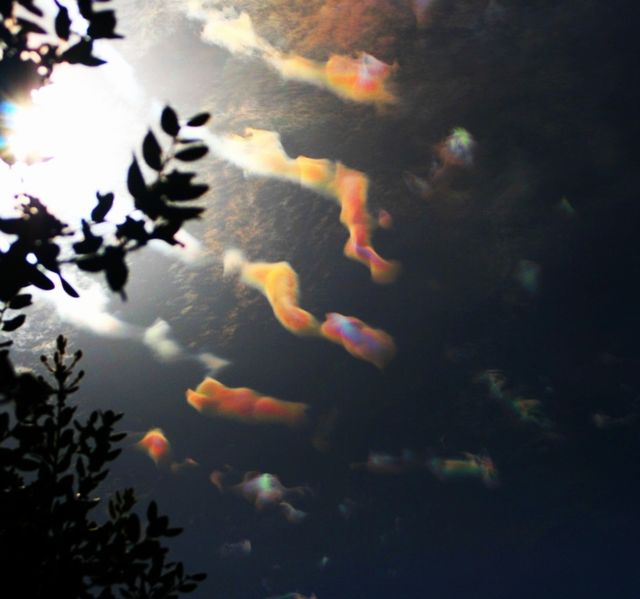A sun dog or mock sun, also called a parhelion in meteorology, is an atmospheric optical phenomenon that consists of a bright spot to one or both sides of the Sun. Two sun dogs often flank the Sun within a 22° halo.
Very bright sun dogs in Fargo, North Dakota. Also visible are parts of the 22° halo (the arcs passing through each sun dog), a sun pillar (the vertical line), and the parhelic circle (the horizontal line).
A right-hand sun dog in Salem, Massachusetts. Also visible are a Parry arc, an upper tangent arc, a 22° halo, and part of the parhelic circle.
Sun dogs in Hesse, Germany
A sun dog in Saskatoon, Canada
Atmospheric optics is "the study of the optical characteristics of the atmosphere or products of atmospheric processes .... [including] temporal and spatial resolutions beyond those discernible with the naked eye". Meteorological optics is "that part of atmospheric optics concerned with the study of patterns observable with the naked eye". Nevertheless, the two terms are sometimes used interchangeably.
A colorful sky is often due to indirect sunlight being scattered off air molecules and particulates, like smog, soot, and cloud droplets, as shown in this photo of a sunset during the October 2007 California wildfires.
When seen from a high altitude, as here from an airplane, the sky's color varies from pale to dark at elevations toward the zenith.
Purple sky on the La Silla Observatory.
An occurrence of altocumulus and cirrocumulus cloud iridescence








